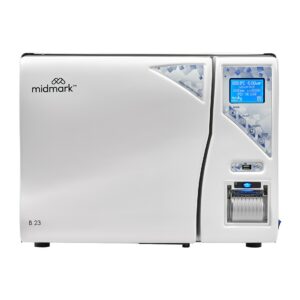
Different Types of Autoclaves Used In Medical Sterilisation
The pressure cooker – like machines known as autoclaves have been used for medical sterilisation since the late 19th Century, with several different types now available on the market. They are now the most important pieces of equipment in the healthcare industry.
How are the different types of autoclave machines categorized?
There are many different aspects that can be used as a basis for the categorization of the different types of autoclaves, and some of these aspects may overlap with each other. In most cases, steam sterilizers can be differentiated by:
- function
- class
- size (capacity)
Different types of autoclaves categorized by function.
All autoclaves use high-temperature and high-pressure steam to sterilize medical equipment and waste. Their function indicates how they should be loaded, and how they force in the steam in their chamber to sterilize the instruments inside.
Vertical autoclaves: These types of autoclaves are loaded by opening their top lid. Especially suited for laboratory use or in smaller clinics with cramped spaces. As such, they also have a smaller capacity chamber.
Horizontal autoclaves: Front-loading steam sterilizers with a larger capacity chamber. When available space is not an issue, and you need to treat many loads a day, this one is exceptional for reducing the strain on medical staff.
Gravity displacement autoclaves: One of the most common type of autoclave that relies on using dense steam to force out the air from the machine’s chamber. They are suitable for the treatment of basic loads like flat surgical tools and certain types of biohazardous waste but are not as versatile as pre-vacuum autoclaves.
Pre-vacuum autoclaves: This type of autoclave uses a vacuum pump to remove all the air from the autoclave’s chamber, allowing for better steam penetration, and the sterilization of more materials and complex loads such as medical textile products, porous loads, larger pieces of equipment, and even objects made from high-density polyethylene like the syringes of sharps and pipette tips.
Different types of autoclaves categorized by class
A more clear-cut way of categorizing the different types of autoclave machines. A steam sterilizer’s class indicates how versatile it is: in other words, it shows what kind of loads can be treated with it.
Class N autoclaves: These are essentially simple, gravity displacement autoclaves that only remove a certain portion of the air inside the machine’s chamber. Designed for the treatment of simpler loads like flat medical tools.
Class S autoclaves: Another type of gravity displacement autoclave that uses a wall of dense steam, but by repeating the process 3 times, it can actually extract all the air from the chamber, and as such, it can already treat bagged instruments and porous loads. Still less versatile and not as fast a class B autoclave though.
Class B autoclaves: Premium pre-vacuum autoclaves that can sterilize the most materials and are also much faster at doing so by removing all the air from their chamber with a powerful vacuum pump. Some models make the best out of modern technology and operate with a completely automated process: this ease-of-use and effectiveness make them very attractive for all kinds of medical facilities.
Different types of autoclaves categorized by size (capacity) 
Here is a categorization that is pretty straightforward, but it certainly does not make it less important to consider. Autoclave size is also a key factor that needs to be taken into account: the right choice here depends on the amount of waste your facility needs to be treated each day, as well as the amount of available space you have.
Large steam sterilizers: The capacity of these types of autoclaves usually ranges between 110 to 880 liters. Ideal for large medical facilities like hospitals that generate a notable amount of waste each day and needs to use a lot of medical tools and equipment to treat patients.
Medium-sized steam sterilizers: The capacity of these types of autoclaves usually ranges between 75 to 200 liters. An excellent choice for dental and other clinics, biotechnological applications, or for operating theaters in hospitals.
Small (benchtop) steam sterilizers: The capacity of these types of autoclaves usually moves around 25 liters. These compact steam sterilizers are perfectly suited for smaller facilities with limited available space, and who do not need to sterilize as many medical tools each day.
As you can see, there are many different kinds of steam sterilizers a medical facility can choose from. Still, the most important factors in choosing the right machine will usually be based upon the quantity and type of medical waste and tools you need to be treated. Bioscint Engineering supplies a vast range of various brands and models of autoclaves to suit your requirements such as Matachana, Scican and Promotal amongst others. Kindly get in touch with us directly in order to provide you with more information and a quotation.







